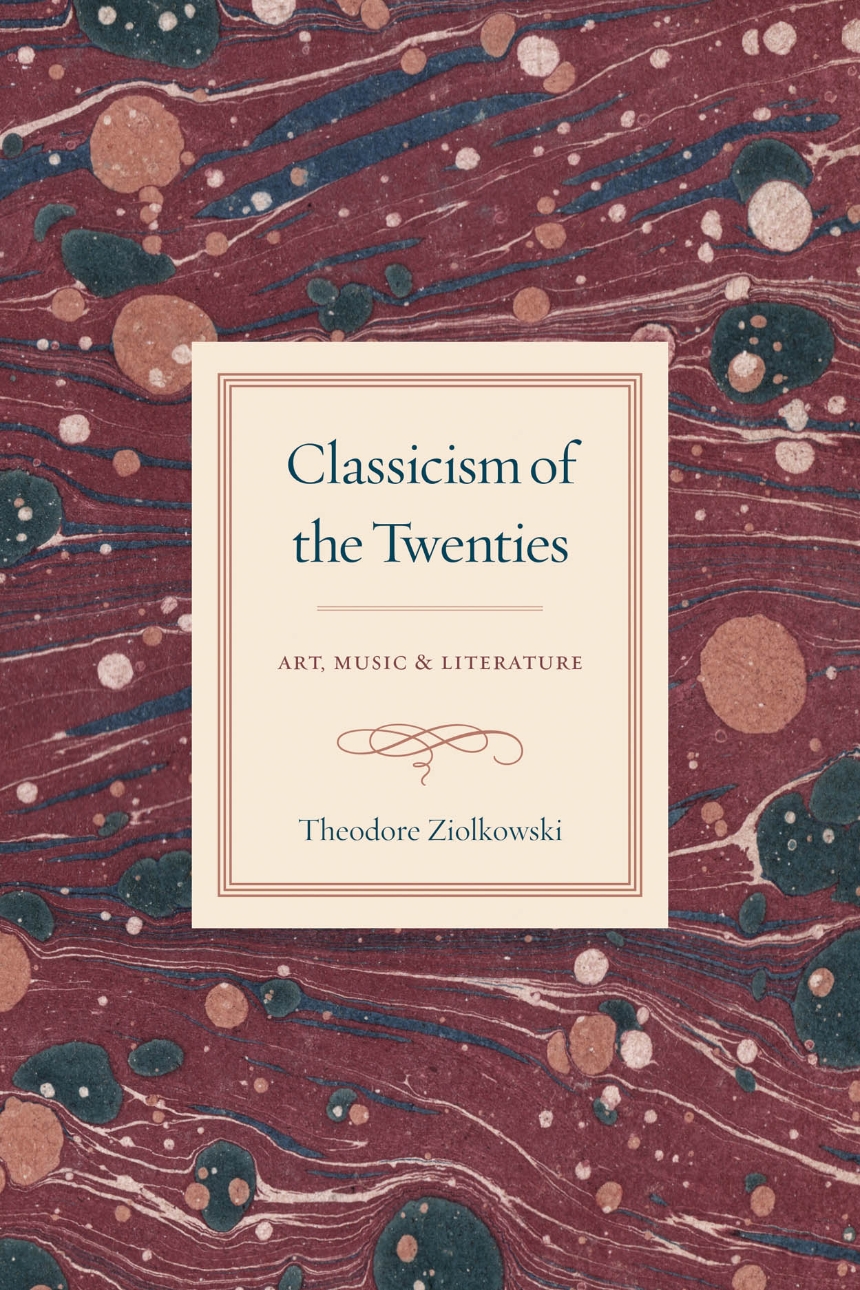Classicism of the Twenties
Art, Music, and Literature
The triumph of avant-gardes in the 1920s tends to dominate our discussions of the music, art, and literature of the period. But the broader current of modernism encompassed many movements, and one of the most distinct and influential was a turn to classicism.
In Classicism of the Twenties, Theodore Ziolkowski offers a compelling account of that movement. Giving equal attention to music, art, and literature, and focusing in particular on the works of Stravinsky, Picasso, and T. S. Eliot, he shows how the turn to classicism manifested itself. In reaction both to the excesses of neoromanticism and early modernism and to the horrors of World War I—and with respectful detachment—artists, writers, and composers adapted themes and forms from the past and tried to imbue their own works with the values of simplicity and order that epitomized earlier classicisms.
By identifying elements common to all three arts, and carefully situating classicism within the broader sweep of modernist movements, Ziolkowski presents a refreshingly original view of the cultural life of the 1920s.
In Classicism of the Twenties, Theodore Ziolkowski offers a compelling account of that movement. Giving equal attention to music, art, and literature, and focusing in particular on the works of Stravinsky, Picasso, and T. S. Eliot, he shows how the turn to classicism manifested itself. In reaction both to the excesses of neoromanticism and early modernism and to the horrors of World War I—and with respectful detachment—artists, writers, and composers adapted themes and forms from the past and tried to imbue their own works with the values of simplicity and order that epitomized earlier classicisms.
By identifying elements common to all three arts, and carefully situating classicism within the broader sweep of modernist movements, Ziolkowski presents a refreshingly original view of the cultural life of the 1920s.
224 pages | 10 halftones | 5 1/2 x 8 1/2 | © 2014
Art: European Art
Literature and Literary Criticism: General Criticism and Critical Theory
Music: General Music
Philosophy: Aesthetics
Reviews
Table of Contents
List of Figures
Preface
Part 1 The Theory
1 Prewar Classicism
Classicism as Term
Classicism as Reaction
Prewar Classicism
An Ironic Retrospective
2 Classicism of the Twenties
Wartime Transitions
The Turning Point
The Dissemination
The Turn to Antiquity
Part 2 The Practice
3 Three Exemplary Figures
The Composer: Igor Stravinsky
The Artist: Pablo Picasso
The Writer: T. S. Eliot
Summary
Part 3 Test Cases
4 The Writers
James Joyce
Jean Cocteau
Hans Henny Jahnn
Paul Valéry
5 The Artists
Giorgio de Chirico
Gino Severini, Fernand Léger, and Others
Francis Picabia
6 The Composers
Paul Hindemith
Alfredo Casella
Part 4 Conclusions
7 Classicism of the Twenties?
Notes
Index
Preface
Part 1 The Theory
1 Prewar Classicism
Classicism as Term
Classicism as Reaction
Prewar Classicism
An Ironic Retrospective
2 Classicism of the Twenties
Wartime Transitions
The Turning Point
The Dissemination
The Turn to Antiquity
Part 2 The Practice
3 Three Exemplary Figures
The Composer: Igor Stravinsky
The Artist: Pablo Picasso
The Writer: T. S. Eliot
Summary
Part 3 Test Cases
4 The Writers
James Joyce
Jean Cocteau
Hans Henny Jahnn
Paul Valéry
5 The Artists
Giorgio de Chirico
Gino Severini, Fernand Léger, and Others
Francis Picabia
6 The Composers
Paul Hindemith
Alfredo Casella
Part 4 Conclusions
7 Classicism of the Twenties?
Notes
Index
